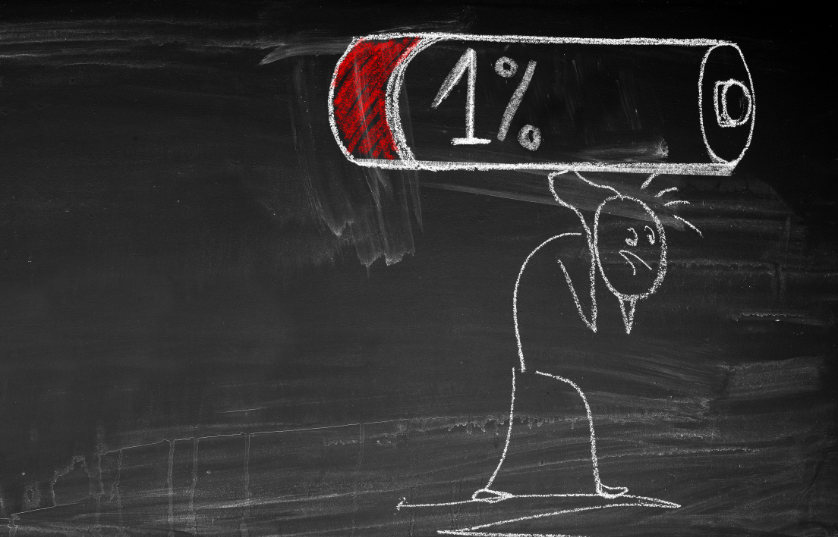Strategies to Reclaim Your Energy and Passion
Burnout is a complex and multifaceted phenomenon that extends beyond mere fatigue and stress, delving into the intricate interplay of emotional, physical, and mental well-being. It is an all-encompassing state that emerges gradually, usually as a consequence of prolonged exposure to excessive stressors, both in personal and professional realms.
This condition is not only detrimental to an individual's health but also poses significant challenges to their overall quality of life.
In essence, understanding burnout involves recognizing its pervasive impact on an individual's emotional, physical, and mental state. It is a nuanced phenomenon that requires a comprehensive approach to address its root causes and provide effective interventions.
By acknowledging the signs and symptoms of burnout, individuals and organizations can take proactive steps to foster a healthier work-life balance, prioritize self-care, and create environments that support overall well-being.

Burnout in Today’s Working Environment
In our fast-paced, demanding world, burnout has become an all-too-common affliction. The relentless stress of modern life, whether at work or in personal relationships, can take a toll on our mental and physical well-being.
In this post, we will explore what burnout is, its causes, and, most importantly, how to beat it. You can regain your energy, enthusiasm, and zest for life with the right strategies.

Understanding Burnout
Burnout is more than just feeling tired or stressed; it's a state of emotional, physical, and mental exhaustion. It often results from a prolonged period of excessive stress and can manifest in various ways, including:
- Chronic fatigue
One prominent facet of burnout is chronic fatigue, a pervasive sense of weariness that transcends physical tiredness. This fatigue goes beyond the typical exhaustion associated with a demanding day; it permeates every aspect of an individual's being, affecting their ability to function optimally in various aspects of life. The persistent feeling of being drained can lead to a profound lack of energy, hindering one's capacity to engage in daily activities with enthusiasm and vigor.
- Lack of motivation and enthusiasm
A noticeable consequence of burnout is the lack of motivation and enthusiasm. Tasks that were once approached with zeal and passion may now seem burdensome and overwhelming. The intrinsic drive that propels individuals to excel in their endeavors becomes compromised, contributing to a sense of stagnation and disillusionment. Reduced job performance often accompanies this decline in motivation, as individuals struggle to meet the standards they once effortlessly surpassed.
- Reduced job performance
Burnout significantly impacts an individual's professional life, and one of the most noticeable manifestations is a decline in job performance. As burnout progresses, individuals may find it increasingly challenging to concentrate on tasks, meet deadlines, and deliver the quality of work they once prided themselves on. The diminished ability to focus and execute responsibilities can lead to errors, missed opportunities, and a general decline in productivity. In some cases, individuals may become disengaged from their work, contributing to a vicious cycle where reduced performance leads to increased stress and dissatisfaction, further exacerbating the burnout.
- Irritability and mood swings
Burnout not only affects cognitive and physical aspects but also takes a toll on emotional well-being. Irritability and mood swings become pronounced as individuals navigate the overwhelming stressors that accompany burnout. Small challenges that were once manageable may now provoke intense emotional responses. The heightened sensitivity can strain interpersonal relationships, both in professional and personal spheres. Co-workers may find it challenging to collaborate with someone who is irritable, and the overall work environment may become tense. Mood swings can also contribute to a sense of unpredictability, making it difficult for individuals experiencing burnout to maintain a stable and positive demeanor.

- Physical symptoms, such as headaches and muscle tension
The mind-body connection is evident in burnout, with physical symptoms often mirroring the emotional and mental strain. Chronic stress can manifest in physical ailments such as frequent headaches and muscle tension. The persistent mental burden experienced during burnout can trigger tension headaches, creating a cyclical relationship where physical discomfort further contributes to emotional distress. Muscle tension, often concentrated in the neck, shoulders, and back, becomes a tangible expression of the body's response to prolonged stress. These physical symptoms not only add to the overall discomfort but also serve as warning signs, indicating the need for intervention and proactive measures to address the root causes of burnout.
- Cynicism and detachment from responsibilities
Burnout instigates a sense of disillusionment and detachment, particularly concerning one's responsibilities. Individuals experiencing burnout may adopt a cynical attitude toward their work, colleagues, and organizational goals. The initial enthusiasm and passion for their responsibilities diminish, giving way to a more detached and apathetic perspective. This detachment can result in a decline in the quality of work, as the emotional investment required for meaningful contributions wanes. Colleagues may perceive this cynicism and detachment, leading to strained professional relationships and a less collaborative work environment. Addressing burnout involves not only acknowledging these attitudes but also implementing strategies to rekindle a sense of purpose and engagement in one's responsibilities.

Causes of Burnout
Burnout can stem from multiple sources, including:
- Excessive Workload: Overwhelming job demands can quickly lead to burnout.
- Lack of Control: Feeling powerless or without agency in your work or life can contribute to burnout.
- Inadequate Rest: Neglecting self-care, such as sleep and relaxation, can increase the risk of burnout.
- Lack of Support: Insufficient social support from colleagues, friends, or family can make burnout more likely.
- Mismatch of Values: When your values and the values of your workplace or personal life don't align, burnout can follow.

Strategies for Beating Burnout
- Prioritize Self-Care: Make time for self-care activities that recharge your energy, such as exercise, meditation, hobbies, and adequate sleep.
- Set Boundaries: Establish clear boundaries between work and personal life. It's essential to "switch off" and disconnect from work-related stress when you're off the clock.
- Seek Support: Reach out to friends, family, or a therapist for emotional support and guidance.
- Learn to Say No: Don't overcommit. It's okay to decline additional responsibilities when you're already feeling overwhelmed.
- Time Management: Improve your time management skills to reduce stress and enhance productivity. Prioritize tasks and break them into manageable chunks.
- Reflect on Your Values: Take time to reflect on your values, both in your work and personal life, and consider whether they align with your current situation.
- Reskill and Upskill: Invest in your personal and professional development to stay engaged and motivated.
- Take Breaks: Incorporate short breaks throughout your workday to recharge and prevent burnout.

Conclusion
Beating burnout is a journey of self-discovery and self-care. By understanding the causes of burnout, prioritizing self-care, setting boundaries, seeking support, and reassessing your values and goals, you can regain your energy, passion, and motivation.
Burnout is not a sign of weakness but rather a signal that you need to take better care of yourself. It's a reminder to slow down, reflect, and make the necessary changes to lead a more balanced and fulfilling life.



